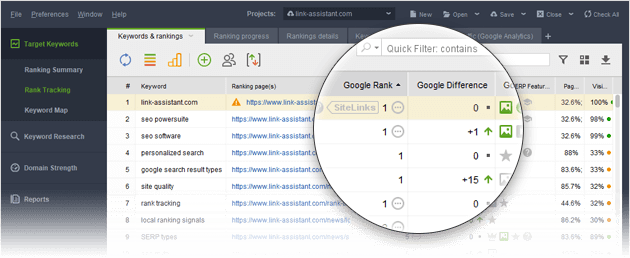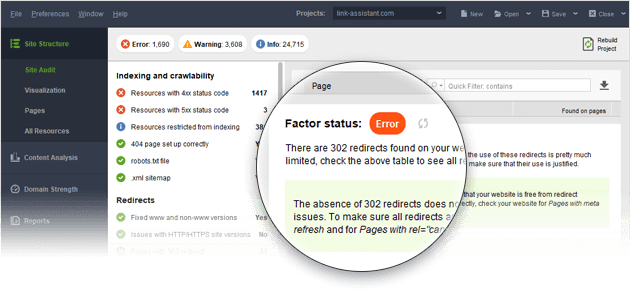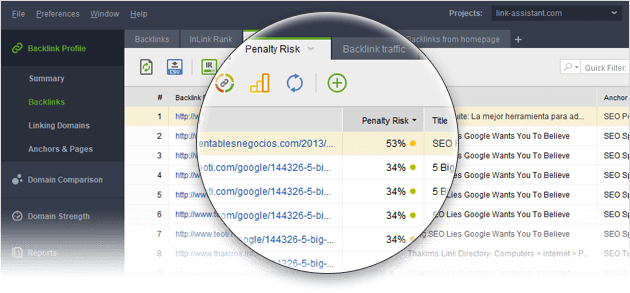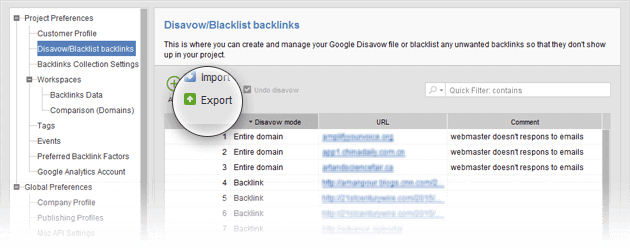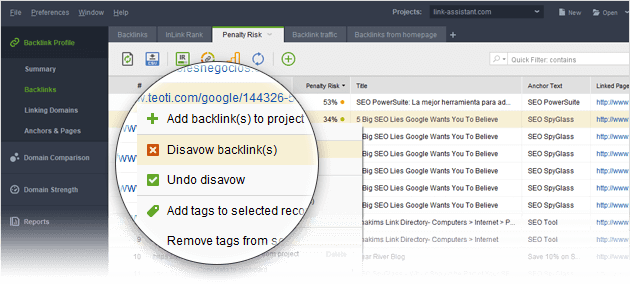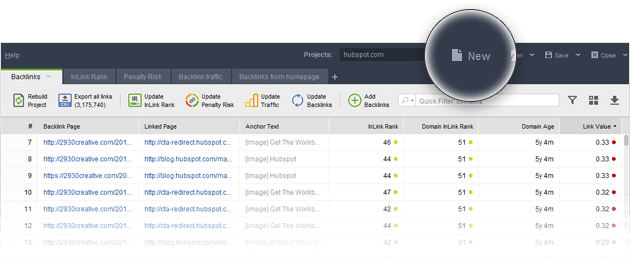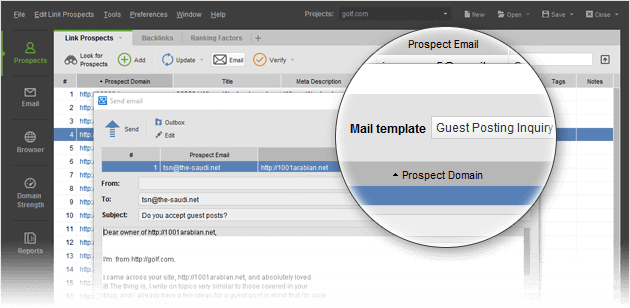Christmas holidays are far gone, while St. Valentines and Easter are coming close — it's the right time to ask yourself if you're getting the most of seasonal organic traffic and how you could improve on that.
In this post, I'll discuss five common reasons for your not getting enough seasonal traffic and will take you through the necessary optimization steps. Let's get started on Seasonal SEO Campaign.
Back in 2009, Hulu.com launched an ad precisely before the launch of the Super Bowl games, and the site's traffic increased by about 50%.
As you can see, there's much more to seasonal traffic than just Christmas and Halloween, but why do so many website owners keep missing out on those awesome opportunities?
Let's review the most common reasons and see if there are any fixes you can implement.
Launch your Google Analytics account, go to the Acquisition Module and set up the report date to see the traffic stats for the previous years.
Looking through the year-over-year stats, you'll most probably spot patterns repeating on a regular basis.
In addition to the general traffic patterns, you should pay attention to the audience's behavior — mark out buying seasons and downtime throughout the years. To view this type of stats, choose Ecommerce segment and select Transactions (mind that you should have Google Analytics tracking code correctly installed on your website).
By the way, did you know you could use special annotations in Google Analytics to create notes on your traffic charts? By looking through the annotations, you'll be able to differentiate seasonal traffic spikes from your marketing campaigns and occasional traffic drops caused by technical issues for example.
This year-over-year analysis will help you identify and understand causes of fluctuations in your site's traffic. Simply put, that's how you'll see what kind of seasonal traffic you've been getting.
Taking a closer look at your site's content, you may for instance notice that in December people are flooding your pages containing Christmas deals, but in April… wait, are there no Easter offers on your website?
And here's the problem — you relied on the existing patterns of seasonal traffic, but completely ignored the possible opportunities.
Of course, you may have more business-specific events in your seasonal calendar, including regional holidays, sports events, conferences, and expos.
You can go further and set up related alerts in your Google Calendar to remind you about the necessary SEO activities, such as keyword research, onpage optimization, link building, email outreach, and so on. Most of these activities have to be started at least 2-3 months before the coming event. When the time comes, Google will send you an email notification, so the event won't catch you unawares.
Then click Download to export the report in CSV.
Go to Google Trends and type in a broad category keyword, something like "Valentine's Day."
Okay, we can see that it's a 100% seasonal keyword which triggers a search spike just a week or two before the event. Please notice how the interest drops immediately after the event.
What else can we see here? Scroll down a bit and take a look at the related queries report. If you think you could use these key phrases, download them in CSV.
You can diversify your list of seasonal keywords even more, by using Google Autocomplete and Related Searches:
Google Autocomplete will show you suggestions from Google's search box based on the keywords you enter. Doing this manually for anything over a dozen keywords would probably take you hours. In Rank Tracker, you can just type in your seed keywords, and it'll automatically pull Google's search box suggestions for you.
Google related searches can be great for identifying keyword terms people search for along with the keywords you have on your list. This method can give you a broad scope of new topics to target you may not have thought about previously.
Finally, you can analyze how effective the found keywords are:
You get it. If you have a category page on your ecommerce store or a well-converting guide on your blog, even such a minor change can make a big difference for your organic results. Surely, you should update your content at least 3-4 months before the coming event. Pinterest, for instance, is already getting prepared and building category pages for Christmas 2017:
Besides, you can take a creative approach when you get an old evergreen guide and try to spice it up with the bits of seasonal content.
For instance, you have a nice old article on "Top Tips to Soothe Crying Babies" — why not make it a bit more festive before Christmas holidays:
I'm a bit joking with the above examples, of course, but I just want to show you that almost any type of evergreen content can be modified and tweaked into great seasonal content. And you'll reap the benefits without spending days on building new pages and links!
One of such tools is Awario — it lets you track mentions and keywords across a variety of social media platforms and websites. It's super easy too. All you have to do is create alerts with keywords, twitter handles, hashtags, and URLs, and the app will diligently collect all mentions and posts that appear online:
How do you handle Seasonal SEO Campaign? Have you been particularly successful with some niches and events? Let me know in the comments below!
In this post, I'll discuss five common reasons for your not getting enough seasonal traffic and will take you through the necessary optimization steps. Let's get started on Seasonal SEO Campaign.
What's Seasonal Traffic?
First things first, let's define seasonal traffic. Generally speaking, seasonality is a characteristic of a time series in which the data experiences regular and predictable changes that recur every calendar year. Any predictable change or pattern in a time series that recurs or repeats over a one-year period can be said to be seasonal.. Therefore, seasonal traffic can be best described as changes in the way users interact with the search engines throughout the year. And sure thing, these changes have to do with a huge variety of causes:Pre-holiday and holiday traffic.
I should emphasize the pre-holiday part here, as people tend to be much more active in the organic search before the actual holiday starts. If you aim for Christmas traffic, you may see the first spikes as early as mid-October.Sales Patterns.
Depending on your business type, you can spot traffic changes during certain periods of the year. For instance, B2B businesses spend less time online in November and December (striving to close the contract deals before the holiday's mayhem), but get really active just at the beginning of the year, as decision-makers return online with new budgets and goals for the year ahead.Literal Seasons' Traffic.
This one's obvious (and easily predictable too!) — a company that sells swimsuits will naturally get more visits and conversions in the summertime. And the very same company will be aware of the seasonal traffic dips in winter, so they may plan other marketing activities for the low season.Trends, Events, and Special Occasions.
Whether it's the time of Olympics or Super Bowl, you can always get some extra traffic creating content and pages with related information, deals, and ads.Back in 2009, Hulu.com launched an ad precisely before the launch of the Super Bowl games, and the site's traffic increased by about 50%.
As you can see, there's much more to seasonal traffic than just Christmas and Halloween, but why do so many website owners keep missing out on those awesome opportunities?
Let's review the most common reasons and see if there are any fixes you can implement.
Reason #1: You don't analyze your site's traffic patterns.
As simple as that — marketers become obsessed with monthly reports on traffic, rankings, and conversions, and simply have no time or forget to look back at the yearly stats.Tips to Maximize Your Seasonal SEO Campaign
Recommended Solution: Check year-over-year traffic stats.
Firstly, you'll need to look at your site's analytics for the last few years to see which holidays and events drove a great volume of traffic and sales.Launch your Google Analytics account, go to the Acquisition Module and set up the report date to see the traffic stats for the previous years.
Looking through the year-over-year stats, you'll most probably spot patterns repeating on a regular basis.
In addition to the general traffic patterns, you should pay attention to the audience's behavior — mark out buying seasons and downtime throughout the years. To view this type of stats, choose Ecommerce segment and select Transactions (mind that you should have Google Analytics tracking code correctly installed on your website).
By the way, did you know you could use special annotations in Google Analytics to create notes on your traffic charts? By looking through the annotations, you'll be able to differentiate seasonal traffic spikes from your marketing campaigns and occasional traffic drops caused by technical issues for example.
This year-over-year analysis will help you identify and understand causes of fluctuations in your site's traffic. Simply put, that's how you'll see what kind of seasonal traffic you've been getting.
Reason #2: You ignore areas of opportunity.
So, you already know that your traffic spikes in November, but goes drastically down in April. Why's that?Taking a closer look at your site's content, you may for instance notice that in December people are flooding your pages containing Christmas deals, but in April… wait, are there no Easter offers on your website?
And here's the problem — you relied on the existing patterns of seasonal traffic, but completely ignored the possible opportunities.
Recommended Solution: Make a list of seasonal events.
Seasonal SEO requires long-term planning, no doubts on that one. But it's so easy to get immersed in your specific marketing campaigns and lose sight of the seasonal opportunities. I'd strongly suggest you should prepare a list of seasonal events over the year you'll focus your SEO and content marketing efforts on. You can start with adding the most popular holidays:Of course, you may have more business-specific events in your seasonal calendar, including regional holidays, sports events, conferences, and expos.
You can go further and set up related alerts in your Google Calendar to remind you about the necessary SEO activities, such as keyword research, onpage optimization, link building, email outreach, and so on. Most of these activities have to be started at least 2-3 months before the coming event. When the time comes, Google will send you an email notification, so the event won't catch you unawares.
Reason #3: You're not using seasonal keywords.
As you may guess, your seasonal SEO doesn't stop on finalizing your content calendar. As a matter of fact, it only starts here. There's an incredibly important part many webmasters skip and lose big time — that is doing seasonal keyword research.Recommended Solution: Build out a list of seasonal keywords.
Since St. Valentine's is just around the corner, let's take it as an example event for our keyword research campaign.Step 1. Look for seasonal keywords in Google Search Console.
First of all, let's go to the Search Query section of your Google Search Console account and look through the keyword phrases that triggered most searches and clicks. Log in to your account and go to Search Traffic > Search Analytics. Check the Impressions checkbox. Set the Dates filter to show 90 days of historical data. It may happen that you'll immediately spot some seasonal keyword opportunities.Then click Download to export the report in CSV.
Tips to Maximize Your Seasonal SEO Campaign
Step 2. Brainstorm the terms and check them in Google Trends.
What if you have a brand new website with no search history? Let's start with picking broad category terms so that we'll be able to identify the related topics and niches.Go to Google Trends and type in a broad category keyword, something like "Valentine's Day."
Okay, we can see that it's a 100% seasonal keyword which triggers a search spike just a week or two before the event. Please notice how the interest drops immediately after the event.
What else can we see here? Scroll down a bit and take a look at the related queries report. If you think you could use these key phrases, download them in CSV.
Step 3. Expand and analyze keyword ideas using Rank Tracker.
Now you have a list of seed keywords with some seasonal traffic potential. Before you start working on your content, it's a good idea to expand your list by including semantically related queries, long-tail keywords, conversational phrases, etc.You can diversify your list of seasonal keywords even more, by using Google Autocomplete and Related Searches:
Google Autocomplete will show you suggestions from Google's search box based on the keywords you enter. Doing this manually for anything over a dozen keywords would probably take you hours. In Rank Tracker, you can just type in your seed keywords, and it'll automatically pull Google's search box suggestions for you.
Google related searches can be great for identifying keyword terms people search for along with the keywords you have on your list. This method can give you a broad scope of new topics to target you may not have thought about previously.
Finally, you can analyze how effective the found keywords are:
- Check the keywords' traffic potential by looking at the Expected Visits column.
- Check the keyword efficiency index of the terms (the KEI column).
- Estimate buyer intent. Switch to the PPC Analysis view and sort the keyword by Cost-per-click. Google AdWords' Cost Per Click gives you a pretty solid idea of how well a term converts — basically, the higher the cost, the better it'll sell.
Reason #4: You create a brand new page for seasonal SEO.
One of the biggest mistakes you could do is creating a new page for your seasonal SEO campaign. Here's why it's not a very good idea:- You'll need much more time to build up at least some page authority, links, citations, etc.
- You risk duplicate content issues creating too many similar pages.
Recommended Solution: Optimize evergreen landing pages.
According to Scott Laughlin, SEO manager at Walmart, you should focus optimization on existing pages to scale your seasonal SEO efforts."I recommend maintaining evergreen landing pages for the specific holiday terms you want to capture, and then pointing navigation from there to existing shelves rather than building new holiday-specific shelves that could risk duplicating what you've already got," Laughlin says. "[Maintaining] and building traction to those year-round evergreen URLs isn't sexy, but that's the tried and true way to win holiday-centric search queries."Let's see how you could revamp your existing evergreen content to catch the big waves of seasonal traffic.
1. Optimize landing pages for seasonal keywords.
Time to get back to the list of keywords you've compiled previously. Many website owners start optimizing content just a couple of weeks before the event takes place. As they have little time left, the onpage optimization comes down to throwing a couple of keywords here and there and keeping their fingers crossed it'll work out. The sad thing is it usually doesn't.2. Update the year.
Going back to the St. Valentine's keywords, did you notice which query makes a search breakout a year after year?- Valentine's day 2014
- Valentine's day 2015
- Valentine's day 2016
- Valentine's day 2017
You get it. If you have a category page on your ecommerce store or a well-converting guide on your blog, even such a minor change can make a big difference for your organic results. Surely, you should update your content at least 3-4 months before the coming event. Pinterest, for instance, is already getting prepared and building category pages for Christmas 2017:
3. Update images, videos, and context.
If there's not so much text content on your landing pages, you can breathe new life into them by adding other types of content — photos, videos, reviews, etc.Besides, you can take a creative approach when you get an old evergreen guide and try to spice it up with the bits of seasonal content.
For instance, you have a nice old article on "Top Tips to Soothe Crying Babies" — why not make it a bit more festive before Christmas holidays:
"Top Christmas Carols to Soothe a Crying Baby" Or if it's in February: "Learn top tricks to soothe crying babies before your St Valentine's get ruined."
I'm a bit joking with the above examples, of course, but I just want to show you that almost any type of evergreen content can be modified and tweaked into great seasonal content. And you'll reap the benefits without spending days on building new pages and links!
Reason #5: You're not watching your competition.
If you don't watch your competitors, you'll never know how and why they are outperforming your site in seasonal SEO.Recommended Solution: Analyze competitors' seasonal SEO.
Let's go through the quick ways to stay informed of the seasonal SEO plans and successes of your competition.1. Create alerts for your target seasonal keywords and mentions.
Staying on top of relevant mentions is your number one priority. Make sure you get notified whenever someone publishes or optimizes a page using the keywords of interest. You can play with the tools, such as IFTTT to set up dozens of hashtag notifications, but I'd recommend using a social listening tool that stores alerts and helps you easily communicate with users.One of such tools is Awario — it lets you track mentions and keywords across a variety of social media platforms and websites. It's super easy too. All you have to do is create alerts with keywords, twitter handles, hashtags, and URLs, and the app will diligently collect all mentions and posts that appear online:
2. Track competitor's rankings for seasonal keywords.
Keeping account of competitors' organic rankings can help you identify if they've already started any optimization activities.3. Subscribe to competitors' email updates.
Lots of seasonal marketing campaigns get started with email outreach. By signing up to competitors' news and updates, you'll be able to see what kind of content and deals they're sharing with their user base.Final Thoughts
I won't be lying to you and stating that Seasonal SEO Campaign is an easy way of getting more seasonal traffic and sales. In some cases — when you start too late or when the competition's too tough — the results won't delight you. To safeguard your efforts, invest enough time in research and optimization, and, as always continually monitor your progress.How do you handle Seasonal SEO Campaign? Have you been particularly successful with some niches and events? Let me know in the comments below!



